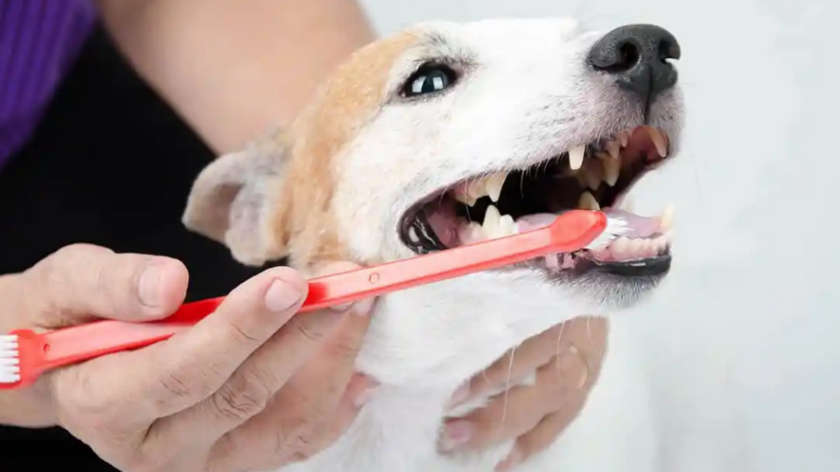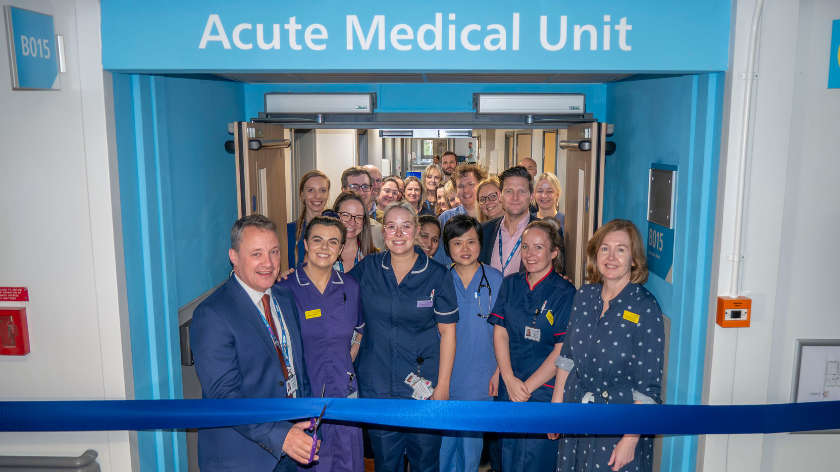
Why should I clean my dog's teeth? Just like us, dogs can have tartar build up and gum disease. We brush our teeth twice daily and we still need regular cleaning at the dentist, so we should be treating our pets the same. Brushing your dog’s teeth is the best way to keep their mouth healthy.
If your dog’s teeth aren’t kept clean they could become covered with plaque.
The plaque allows the bacteria that lives in your dog’s mouth to multiply.
These bacteria give off a type of acid which eats into the surface of your dog’s teeth.
Over time, this can cause painful cavities, gum problems and might mean that your dog loses some of their teeth. Anyone who has had dental pain in the past will know how sore this can be.
How do I clean my dog’s teeth?
You can buy special toothbrushes and toothpaste for your dog.
The toothpaste is often poultry flavoured to make it more appealing.
It’s important to use pet toothpaste as it is safe for your dog to swallow.
As well as having an abrasive action, they also contain enzymes which help to break down the tartar.
It’s a good idea to start brushing your dog’s teeth when they’re young.
They quickly get used to it as part of their routine.
It’s never too late to start though, and older dogs will soon get used to it.
Take things slowly and get them used to having their teeth cleaned over a few weeks:
Other ways to keep your dog’s teeth healthy Brushing your dog’s teeth regularly is the best way to keep their teeth clean and healthy.
There are some other things you can do in between brushes to help maintain a healthy mouth:
Bad breath (halitosis) Have you noticed your dog’s breath is a bit smellier than usual? It might be that they need introducing to a regular tooth brushing routine.
However, there are few health issues that might cause bad breath too:
Signs your dog has dental disease:
Let them taste their new dog-safe toothpaste so they think of brushing their teeth as a treat, not a chore.
Get them used to having their mouth touched, you can do this by gently rubbing a soft cloth along their gums.
Gradually move on to using a brush that fits over your finger like a thimble, this will get your dog used to the feeling of their teeth being brushed.
When your dog’s comfortable and ready, use a proper dog toothbrush, the longer handle will help you reach those teeth at the back of their mouth.
A double ended toothbrush is ideal to use on any size of dog and any size of tooth.
You can buy toys that are designed to clean your dog’s teeth as they chew on them.
Dental chews and specialist foods can also help to keep your dog’s mouth healthy.
Be careful not to feed your dog too many of these as it could make them overweight. The prescription dental diets are often bigger biscuits so the dog has to crunch on them rather than swallow them whole.
They are also made of a tight fibre matrix which helps to clean the tooth as they bite in to the kibble, rather than a lot of commercial biscuits that just shatter easily.
Don’t feed your dog bones as these can damage your dog’s teeth.
Bones can also break into splinters which can damage their gums, throat and intestines.
Dental disease: If your dog is struggling with rotten teeth or gum infections, brushing won’t help and can cause them pain.
Your dog will need a trip to the vet for a dental check and may need extractions under anaesthetic.
Kidney disease: Your dog’s kidneys clean their blood and filter out waste into their urine.
If their kidneys aren’t working properly it can make their breath smell like ammonia.
Diabetes: If your dog has diabetes, their breath might start smelling sweet or fruity (people often says it smells like pear drops).
Something stuck in their mouth: If your dog has something stuck in their teeth or gums, bacteria can build up and cause a bad smell.
Mouth tumour: This is very rare but it’s important not to ignore any signs like bad breath, excessive drooling or difficulty chewing.
Dental disease can be very painful for your dog and they are not the best at letting us know when they are in pain.
They will often continue to eat despite the discomfort. Some of the signs include: If your dog has serious problems with their teeth they’ll need to be seen by their vet as brushing alone won’t solve the painful problem.
They may need a set of dental x-rays to assess the periodontal disease below the gum line that we can’t see.
Your dog may need some teeth extracting and finally a scale and polish to restore good oral health.
Bad breath Yellow/brown coloured teeth Red or bleeding gums Difficulty eating or not wanting to eat Dropping food from their mouth Weight loss Rubbing their face Drooling.
To book in for your dog in for a dental check, please call Claro Hill Vets on 01423 228080 or visit http://www.clarohillvets.co.uk















